At the forefront of the underwater confrontation: submarine hydroacoustics. From the beginning of the cold war to the 70s
From practical experience in hydroacoustics
foreword
The issues and problems of modern submarine warfare of modern submarine warfare were considered on the pages of "VO" more than once:
Arctic torpedo scandal.
Real threats in the Arctic: from the air and from under water.
APKR "Severodvinsk" handed over to the Navy with critical for combat effectiveness.
Antitorpedy. We are still ahead, but we are already overtaking.
Where is Admiral Evmenov running?
Anti-submarine defense: ships against submarines. Hydroacoustics.
Anti-submarine defense: ships against submarines. Weapons and tactics .
However, a full-fledged disclosure of the topic is impossible without considering the issues of submarine hydroacoustics, with an emphasis on their development and real (combat) effectiveness. It should be noted that this is the first time that such an integrated approach to the subject is being implemented.
Part 1. First and second generation. Hydroacoustics of the Great War
In 1930, in Germany, a commission headed by the well-known Soviet scientist (and former commander of the submarine) A.I. Berg purchased sound direction finders for the first domestic submarines. By 1932, on the basis of the received German noise direction finders (SHPS, noise direction finding station), the first domestic SHPS "Mercury" and "Mars" were developed. However, problems with their quality led to further purchases of German sound direction finders in the 30s (only in 1936 - 50 sets).
The prominent Russian historian M.E. Morozov wrote:
We cannot agree with the opinion about "good knowledge" of German hydroacoustic stations (GAS): if in formal technical characteristics our "Mars" were really similar to German GHGs, then in real combat capabilities they were simply incomparable.
The Allies, having received German noise direction finders (for the first time on the U-1942 submarine captured in May 570), were shocked by their high combat capabilities, and the key factor here was a set of measures to ensure their high noise immunity and sensitivity - just the fact that was largely overlooked by us.
About the sound direction finder of the submarine "D-2" it was written:
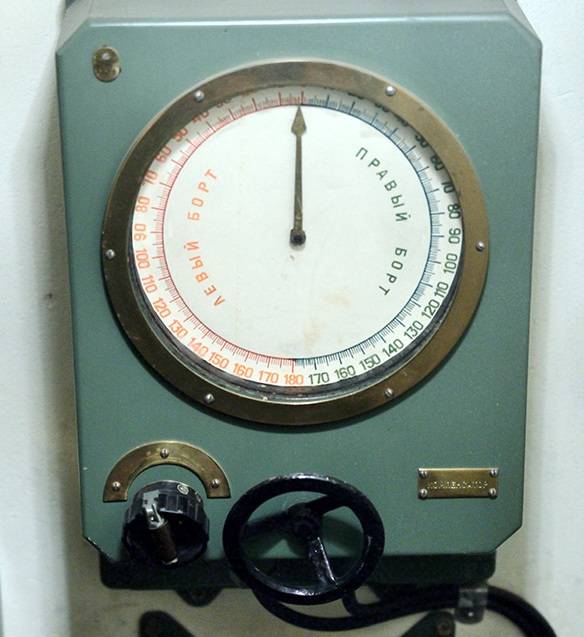
The crux of the matter was that the GHG stations were relatively low-frequency (with a lower limit of much more than 1 KHz), and, lacking the necessary means of protection against interference, "collected it with a shovel."
In addition, having a small base, even in a fully serviceable form, the "Mars" had a large direction finding error, a high level of side lobes and poor heading resolution. For example, during the attack of our K-21 German formation with the battleship "Tirpitz", taking into account the continuous noise front and the impossibility of separate direction finding of the targets of the SHPS "Mars" during the attack, the K-21 turned out to be absolutely "blind" under water.
Thus, even at the very beginning of its development of submarine hydroacoustics, the noise immunity factor became one of the determining factors in the development and real capabilities of the GAS.
Of great interest is the German experience in solving this technical problem during the 30s and early 40s. In addition to the general high technical culture of manufacturing, the use of acoustic decoupling, the German developers have introduced a set of bandpass frequency filters (in fact, separate frequency sub-bands) with three average values of 1, 3 and 6 kHz. At the same time, during the attacks, 3 and 6 kHz sub-bands were most often used, which provided the best accuracy (error of 1,5 ° and less than 1 °, respectively) and the possibility of separate direction finding of close targets.
In the Atlantic, the detection range of the GHG NLS for single targets (in the low-frequency sub-band) reached 20-30 km, for convoys - 100 km.
A very good effect was given by the design of the large-size SHPS antenna (with a good base) as a separate streamlined "balcony device".
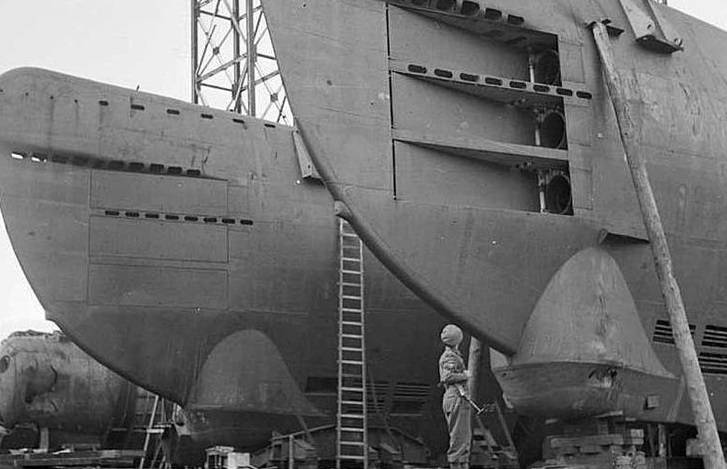
The high performance characteristics of the latest variants of the GHG SHPS ensured the effective and covert use of torpedoes by the new series XXI and XXIII submarines, and the allies were very lucky that only an extremely small number of them managed to enter service with the Kriegsmarine.
First post-war generation. we
The new military-political situation after the end of the Second World War required the accelerated construction of the Navy and its submarine forces at the most modern level.
An honest and tough work was carried out on the mistakes in creating their own GASs, the GASs of the allies and the German experience were very carefully studied (including during special topics, for example, the "Trophy" of 1946).
Practically all branches of science, not only rocketry and aviation, but also hydroacoustics.
In 1946, in OKB-206 of the Vodtranspribor plant, work began on the creation of a modern unified ship-to-fire station "Phoenix" for the submarines of the large shipbuilding program of the USSR Navy. The prototype of the ShPS was installed on the captured XXI series submarine and successfully passed state tests (GI) in 1950.
SHPS "Phoenix" turned out to be an extremely successful development, which looked quite decent against the background of foreign analogues (for example, the American AN / SQR-2).
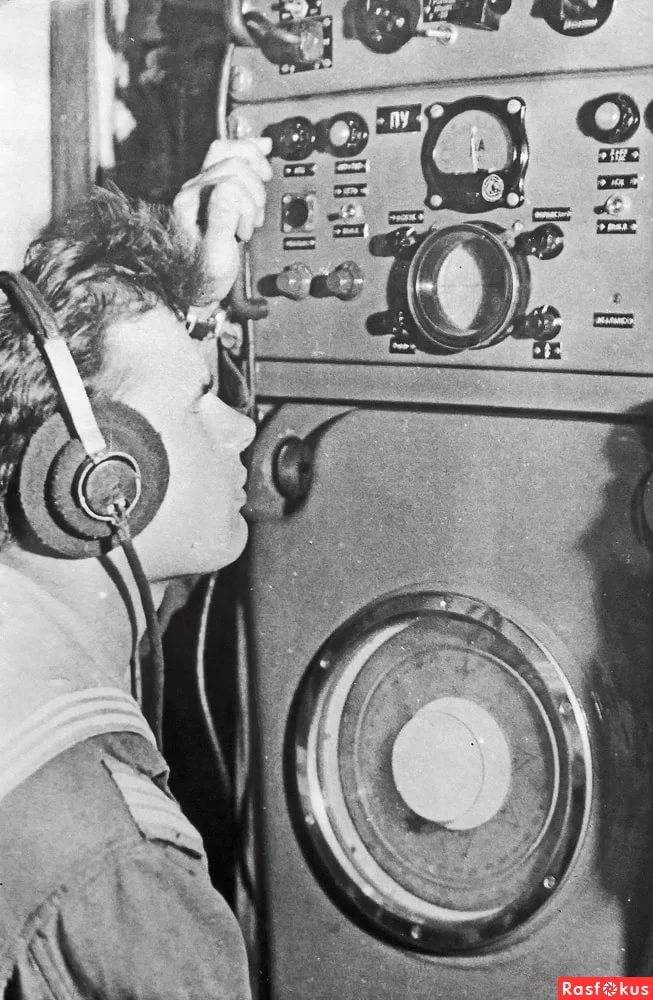
A cylindrical antenna of 132 magnetostrictive receivers, a phase direction finding method, which ensured high accuracy (error less than 0,5 °) data output for torpedo firing, integration with a dual-frequency (15 and 28 kHz) sonar station (HS) "Tamir-5L" (hereinafter when upgrading replaced by "Plutonium") and the mode of code communication between submarines. The correct choice of the frequency range (the result of a very careful study of foreign experience!) Provided good noise immunity and heading resolution for close targets.
For the most massive domestic submarine of project 613, the antenna of the Phoenix ShPS was placed in an analogue of the “balcony device” of the German submarines together with the Tamir-5L RTU (which was replaced by Plutonium during modernization).
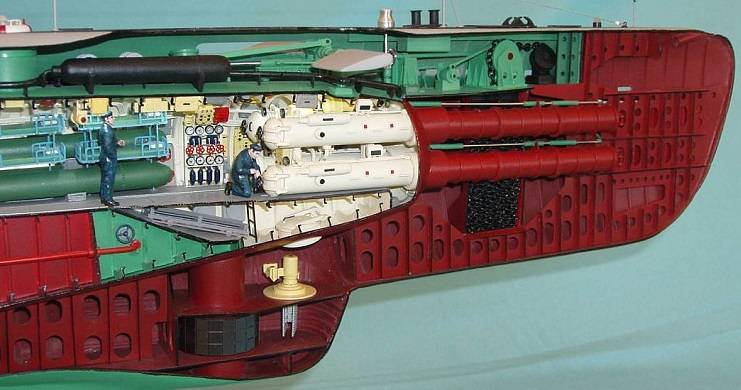
In 1956-1959. OKB-206 carried out two experimental design works (R&D) to modernize the Phoenix ShPS: Kola (implementation of the automatic target tracking mode, ASTs) and Aldan (increasing the sensitivity and implementing the correlation method of direction finding and circular inspection of the horizon with a period 30 or 60 s due to continuous rotation of the antenna switch). The modernized ShPS was put into service in 1959 under the designation MG-10.
In the early 60s, another modernization was carried out: MG-10M with an increase in the detection range by another 30% and integration with the hydroacoustic station (GAS) for detecting hydroacoustic signals (OGS) "Svet-M".
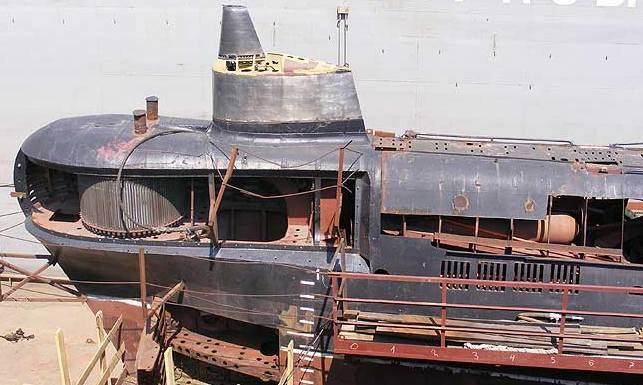
From the memoirs of an officer of the radio technical service with the B-440 641 project:
The first area to search for we were given the Tyrrhenian Sea, where we first discovered our first SSBN. The advantage of our boats at the initial stage was that we were practically in ambush, had 2,5-3 knots on the engines of the economy ship, and the SSBNs circulating in the area of their combat duty did not hear us and "ran into" us. The fact that the boat was new, with a new model of ShPS MG-10M on transistors, also helped significantly. This first contact was remembered most of all by the fact that we led the missile carrier for an unusually long time - 1 hour 56 minutes, it remained our kind of record. But then, at the next stage, maintaining contact and pursuing SSBNs, our technical backwardness immediately began to affect: we gave an average move (over 6 knots), and the Amer immediately found us, started evading and added speed. At 14-16 knots, he easily walked away from us (we could develop such a speed for a short time, but at the same time we would be completely “deaf” and would immediately lose contact) ...
… Since there were amazing hydrological conditions: we continued to hear SSBNs with increasing distance and followed it. After a while, he realized this and released a submarine simulator, a very accurate copy of his noise. We could not maintain contact with the two targets on the ShPS, as well as determine which goal is true. As a result, we lost contact ...
Usually, the time of contact with the SSBN was 10-20 minutes, we could no longer keep the "foe" (I indicated the reasons above). But our reports of the discovery greatly helped the General Staff of the Navy to figure out the patrol routes of SSBNs and direct other forces to them. During this autonomy, the B-440 had 14 stable contacts with SSBNs.
This was written about the 70s, but in fact, the Fenix-MG-10 SHPS survived not only until the early 90s (the complete withdrawal of their carriers from the Navy), but also to this day. One of the variants of the modern MGK-400EM (MGK-400EM-01) provided for the possibility of hardware modernization of the MG-10M, MG-13M Sviyaga M, MG-15M Svet M. In a modified form (with new antennas), this is today one of the options for hydroacoustic weapons for new projects of small submarines (for example, from the Piranha series of the Malakhit SPBM).
The domestic competitor to Phoenix and Plutonium from Vodtranspribor turned out to be the complex (SHP and GL) GAS "Arktika", which had been developed at NII-3 (NII "Morfizpribor") since 1952. for submarines of medium and large displacement.
In fact, the "Arctic" was a large hydroacoustic ear with rotation drives, a reflector and 4 reversible hydroacoustic transducers. Operating modes: ШП, АСЦ, ГЛ. For the WB mode, the antenna was automatically rotated in a given search sector at speeds of 3, 6 and 16 degrees per second. For the GL mode, a Doppler filter bank was introduced for the first time in reception.
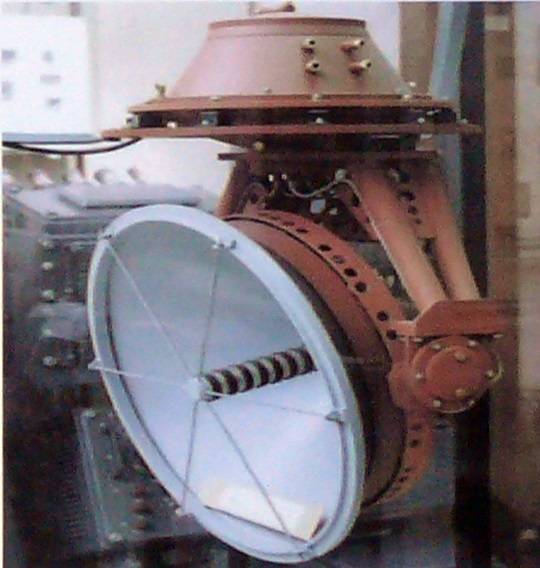
In service with the GAS "Arktika-M" was adopted only in 1960 under the designation MG-200. "Arktika-M" had a number of serious shortcomings, but it was the only domestic GAS submarine of that time, which made it possible to determine the submersion depth of the submarine target.
Officer with B-440:
First post-war generation. "Possible enemy"
The American analogue of the Phoenix and MG-10 was the AN / BQR-2 SHPS (its later modernization on the AN / BQR-21 solid-state elements). The GAS antenna consisted of 48 linear hydrophones 43 inches (1092 mm) high, forming a cylinder 68 inches (1727 mm) in diameter. Working range 0,5-15 kHz. The detection range of diesel-electric submarines, upgraded according to the GUPPY project, running under the snorkel, is about 15-20 nautical miles.
The technical capabilities of the AN / BQR-2 and MG-10 were close, therefore, the real effectiveness was determined by the training of operators, the competent use of the GAS by the commanders and officers of the submarine and their noise.
Contrary to the widespread belief that the US Navy's submarines allegedly do not use the active modes of the SAC (GL), they not only use them, but consider them extremely important in battle.
This is how Norman Friedman described the first duels between submarines and diesel-electric submarines in his book US Submarines Since 1945. We are talking about the so-called Operation Rum Tub ("Rum bath"), a series of exercises, during which the battles under water between the world's first submarine "Nautilus" and diesel submarines were practiced:
Thus, the Nautilus demonstrated its potential as an underwater escort vehicle.
Moving at a speed of 22 knots, he detected the British diesel-electric submarine "Auriga" using the active mode of the GAS SQS-4 at a distance of 3000 yards (2730 meters, 14,8 cab.) And performed a simulated attack.
During later exercises, the helicopter searching for the submarine rushed to a green rocket (a signal rocket launched from under the water from a submarine, after exiting the water and taking off upwards, descends by parachute and burns for 10-20 seconds), which was fired by the Nautilus, but he had already gone 3500 yards, a safe distance from any weaponsthat the helicopter could drop.
By 1957, the Nautilus had carried out 5000 training attacks. Conservative estimates showed that a non-nuclear submarine would have been sunk about 300 times, but the Nautilus was conditionally sunk only 3 times.
Using their active GAS paths, nuclear submarines could maintain contact with diesel ones without the risk of being counterattacked.
The US Navy decided to abandon the construction of diesel submarines and come to terms with the high cost of a fully nuclear submarine. Taking into account the estimates of Wilkinson (commander of the "Nautilus"), the values of the speed of submarines in the TTZ were significantly increased compared to 1950. The result was Skipjack.
That is, even suddenly finding a diesel-electric submarine at a short distance in a silo (or upon the fact of using a torpedo weapon by it), the submarine of the "potential enemy" "broke the distance" beyond the effective use of torpedoes, after which, using the GL, she could calmly shoot our diesel-electric submarine (and the lower noise level of diesel-electric submarines did not matter here anymore).
Initially, the "standard sonar" for US PLA and diesel-electric submarines was the AN / BQS-4 GLS with an operating frequency of 7 kHz and a range of up to 7 km (slightly superior to our Plutonium GLS).
Second generation. USA
The sharp increase in the importance of underwater confrontation after WWII led to the deployment of large-scale research work to improve the GAS in the United States and the USSR (with both sides actively using the German experience). The main direction of development was the provision of a significant increase in the detection range due to the development of the low-frequency range.
Their practical result was the new GAS (and their integration as part of hydroacoustic complexes - GAK) of the second post-war generation of submarines.
The first here were the USA, which deployed in the late 50s the serial construction of Thresher-type submarines (after the death of the lead submarine, the series became known as Permit) and the forced construction of a large series of SSBNs.
The key element of the new multipurpose submarine is the AN / BQQ-2 hydroacoustic complex (GAK) with a large-sized (4,5 m diameter) spherical bow antenna GAS AN / BQS-6 (WB and GL modes), a conformal "horseshoe" low-frequency antenna AN / BQS BQR-7, AN / BQQ-3 target classification equipment, AN / BQG-2 passive target distance detection apparatus, AN / BQH-2 recording and analysis equipment and AN / BQA-2 underwater communication station (ZPS).
In 1960, during the tests of the GAS diesel-electric submarine, going under the snorkel, the AN / BQR-7 GAS was discovered at a distance of 75 nautical miles.
Receiving antennas of the AN / BQG-2 type SHPS were spaced along the length of the submarine hull, which allows using the phase method to determine the current distance to the target.
For US Navy SSBNs, a spherical antenna was not installed, long-range detection was provided by an AN / BQR-7 low-frequency NLS.
The AN / BQG-2 variant for diesel-electric submarines was very interesting, with antennas of the "shark fin" type, which protruded noticeably above the tuning.
Speaking about the US Navy GAS, it should be emphasized that their development went in a very close connection with the issues of the use of weapons, moreover, in real combat conditions (including the widespread use of hydroacoustic countermeasures, SGPD).
To a large extent based on this, a spherical antenna appeared on the multipurpose submarines of the US Navy, which provided in the near zone, incl. the ability to determine the depth of the target. The extremely low noise immunity of torpedo homing systems (HSS) for their effective use in the conditions of the SGPD required the "off" of the SSN in the zone of operation of the SGPD and its "inclusion" along the passage of the "SGPD zone". This was provided by the telecontrol system of the Mk37 mod.1 torpedoes, but the problem was that the SSN had a narrow opening in the vertical plane, and in order not to miss the target and "turn on the head" in time, it was necessary to know the real depth of the evading submarine target (and bring your torpedo to it).
The emergence of the GAS passive determination of the distance to the target was also associated with the use of torpedo weapons, and the point here is not so much that knowing the distance greatly facilitates a torpedo attack, the main thing was that when using torpedoes with a nuclear warhead (remote-controlled electric torpedo Mk45) it was necessary to know exactly the current distance to the evading target (the real affected area of the nuclear warhead was very local).
Second generation. we
To our great regret, despite the major successes of our science and industry in creating new GAS and GAK, the issues of close integration of weapons and acoustics have been largely overlooked in our country.
As in the USA, as a result of the large-scale R&D "Shpat", the transition to a significantly lower frequency range and the use of extremely (in terms of carrier capabilities) large-sized hydroacoustic antennas were justified.
It should be noted that the development of new GAS was then carried out on a competitive basis (MG-10 and Kerch, Vodtranspribor and Arktika and Rubin, Morfizpribor). This was the case in many high-tech areas, for example, the control systems for new operational anti-ship missiles (ASM) were simultaneously developed by the NII Granit and Altair. Yes, there was a certain duplication of work and costs, but at the same time there was a safety net in "risky" projects, and most importantly, the competition forced the developers to give their best in work at "101%", and this fully justified itself.
SJSC "Kerch" for nuclear-powered missile ships was developed by the OKB of the "Vodtraspribor" plant. The tactical and technical assignment (TTZ) was issued by the Navy at the end of 1959 and provided for an increase in the detection ranges in the new SAC by an order of magnitude from the existing SAS. For this, a large-sized nasal cylindrical antenna (with a diameter of 4 m and a height of 2,4 m), an onboard extended antenna (33x3m) with a frequency range of 0,2-2 KHz were provided.
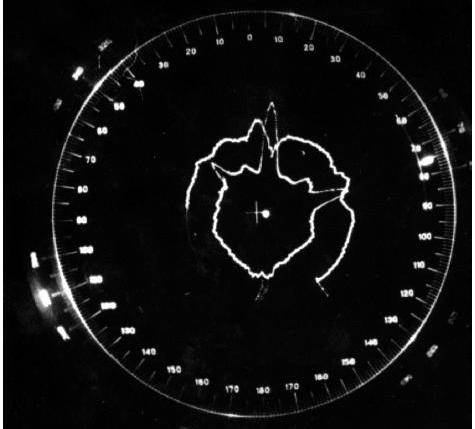
Tests of an experimental sample of this antenna in the Pacific Ocean in 1960-1961. for the first time provided the detection of surface targets at a distance of more than 250 km.
High capabilities were possessed by paths for detecting hydroacoustic signals (OGS) with a large main cylindrical antenna 2,5 m in diameter and sonar (GL).
The GL tract had a powerful (100 and 400 kW electric power) large-sized (2,5x2 m) antenna, rotatable in both planes (vertically from + 15 ° to - 60 °), which ensured target detection even in the “shadow” zone due to “ bottom reflections ".
Contrary to the widespread opinion "about the warm tube electronics of the USSR" in "Kerch" transistors were widely used (for example, in pre-amplifiers).
SJSC "Kerch" successfully passed the GI in 1966 and already in 1967 the ROC "Balaklava" began on its deep modernization. Unfortunately, it was discontinued in 1969 due to the development of the Rubicon State Joint Stock Company (more on that below).
For multipurpose nuclear-powered ships, the Morfizpribor Research Institute developed the Rubin State Joint Stock Company with a main antenna that was larger than the Kerch antenna, without onboard antennas and with a different composition of paths. In terms of the technical detection range in the silo, the "Rubin" slightly surpassed the "Kerch" (due to the larger antenna), but the main disadvantage of the "Rubin" turned out to be the GL tract, which was weak in terms of independent search capabilities, which, due to the limited sector of work, was even called "the distance measurement tract (ID) ". The possibility of independent search of targets by the GL tract by the developers of "Rubin", alas, was not considered and was not studied.

Instead of an intra-complex mine detection system (as in the Kerch), a very good MG-509 Radian was developed (more on that below).
For the highly automated small nuclear submarine of Project 705, the Okean State Joint Stock Company was developed, which had a very developed sonar subsystem. Interestingly, at the initial stages of development, the main spherical antenna was considered for the Okean State Joint Stock Company (as on the US Navy submarine), which was abandoned during the development process for technological reasons in favor of a conventional cylindrical main antenna.
In terms of their technical level, the SJSC "Kerch", "Rubin", "Ocean" were executed at a very high level and were quite "competitive" with the American BQQ-2. The problem of a significant loss of our submarines then in the detection range was associated not with the GAS, but with their much higher noise (including interference with their own GAS), a clear example of which is the well-known comparative graph of the noise (and its reduction) of the US Navy submarines and the Soviet Navy.
From an article by Rear Admiral A. Berzin "Guardfish is chasing K-184":
Guardfish had an advantage over K-184 in the following parameters:
- speeding by 5 knots;
- noise is 6 times less;
- the presence of the "Sabrok" weapon, which we did not have;
- the detection range of the SAC is 6 times greater than ours.
All this undoubtedly contributed to the long-term tracking of the Guardfish submarine for our submarine. But, despite this, our submarine was able to detect the presence of tracking and make a separation from the Guardfish submarine. As they say, the need for invention is cunning.
Tracking detection was facilitated by:
1. Unfavorable hydrology in the Philippine Sea, which forced the Guardfish to shorten the tracking distance so as not to lose contact, which in turn allowed K-184 to detect it.
2. Using the Guardfish radar, the first time we detected its short-term operation on May 27.
3. The use of the K-184 submarine of non-standard maneuvering when detecting tracking, which also allowed the K-184 to break away from the Guardfish pursuit.
David Minton called this maneuvering in his article aggressive and passing at high speed, which personally surprises me, because in that situation, I regarded his actions as extremely hostile and dangerous ... at very dangerous distances, so that in some compartments we heard the noise of Guardfish propellers.
SRS and the problem of noise immunity
The key problem of analog domestic SACs was their low noise immunity. Of course, serious work was going on on this, but the capabilities of analog technology were objectively limited. If in the high-frequency range it was still possible to provide high noise immunity due to the small wavelength and a decent aperture of the antenna, then the small dynamic range of the noise direction finding paths of the SACs and the significant level of side lobes of their receiving antennas led to the fact that, since the use of the US Navy PLA low-frequency GPT, our SACs in the noise direction finding mode they were "blind" (including completely). And the enemy has demonstrated this to us many times.
It should be emphasized here that since the beginning of the 50s, the US Navy, considering the SPDT (the subject of which requires a separate article) as one of the key factors in underwater combat, conducted a number of research exercises with the widespread use of ships, weapons, and SPDT. Effective SRS (including low-frequency ones) were created, their serial production was launched, they were well mastered by the US Navy and NATO and were widely and massively used by them. Those. what in battle to "blind" the SAC of the submarine of the Soviet Navy, the US submariners had ...
In the USSR, the situation was the opposite. The GSPD were “lost” between the “torpedoists”, “acoustics”, “calculators”, “mechanics”, “Rebovtsy” ... Formally, the “electronic warfare structures” were responsible for them, but the “efficiency” of such control was such that until very recently the submarine of the Navy at all did not have an SGPD with effective low-frequency suppression (MG-74, on which there was an attempt to "do something like that", was flawed at the level of the original TTZ).
The basis of the ammunition load of the SGPD of the USSR Navy were blunt "bubbles" of the GIP-1 and MG-34 type, which had low efficiency (in the low-frequency range it was generally near-zero). At the same time, these problems do not mean at all that there were no opportunities. There were! An example of this is the very, very worthy self-propelled simulator MG-44, made back in 1967, or the MG-104 device of the late 80s.
It's just that the task of creating effective SRS for submarines of the Navy was not actually set, and the work that was carried out on this topic was almost completely an imitation of violent activity. Our submariners either did not have effective means of the SGPD, or they were extremely limited (MG-44, MG-104).
All this, when it came into contact with a "probable enemy" at sea, sometimes led to extremely grave consequences.
Rear Admiral Shtyrov:
Neulyba and Whisper did not know (this was realized much later) that the tactics available to them ... were hopelessly outdated and powerless in the face of the latest technology of the "damned imperialists".
The cruel irony is that there were other examples of successful "technical initiative" of the submariners themselves (which, however, did not arouse the interest of the command, science and industry). Rear-admiral V.V. Naumov, the former navigator of the B-36, which broke through in 1962 as part of the "four" diesel-electric submarines of project 641 to Cuba, recalls:
Speaking about the SRS, it is necessary to note one more problem: hypertrophied secrecy, as a result of which the "acoustics" and "Rebovtsy" sat and traveled separately, in "different cars." Moreover, the real characteristics and capabilities of our SRSD were sometimes simply hidden from the Navy "crew"!
In this situation, high-frequency mine detecting stations turned out to be the salvation for the USSR Navy.
GAS mine detection
GAS mine detecting SJSC "Kerch", "Ocean" and a separate GAS MG-509 "Radian" had very high noise immunity, confidently classifying the GAS and real submarine targets (and this was ensured even at high speeds of our submarine).
The mine detection tract of the Kerch SJSC, which provided not only the main purpose, but also successfully “saw” torpedoes at very good ranges, also had very high capabilities. For example, according to the recollections of the officer of the mine and torpedo control of the Pacific Fleet (and then 28 NII) Bozin L.M., when firing from the submarine of project 670, he personally observed on the GAS screen 53-65K torpedoes, which were guided along the wake of a surface target.
Those. the irony of fate is that today the nuclear-powered missile ships of projects 667 and 670 and developments in the early 60s could well have successfully used the anti-torpedoes "Last", i.e. to do what the "newest" Boreas are unable to do.
Here it is necessary to understand that such use of mine detection HAS (as the main means of target designation in battle) "diverged" from official recommendations, was done proactively and did not get into large hands of the Navy, even despite a number of our major successes achieved thanks to mine detection HAS and proactive, intelligent and decisive actions of a number of our submarine commanders. Read more in the article "At the forefront of submarine confrontation. Cold war submarine".
Moreover, when creating a unified HAS mine detection "Arfa" for the 3rd generation submarine, which is very good in concept and technical level, its range scale was absolutely unreasonably "slaughtered" (only 4 km)! And this is despite the fact that the GAS mine detecting can "see" further (naturally, not mines, but submarine targets), this was successfully shown by "Radian" (which had the ability to re-scan the scale over a long distance).
Brief conclusions
Almost all of them created in the late 50s - early 70s. samples of domestic GAS and GAK possessed a high technical level and decent combat capabilities.
It should be noted that during this period the development of GAS in the USSR was carried out by various organizations, and successfully. There was no monopolization of works.
The superiority of the submarines of a potential enemy at that time was associated not with the lag of domestic hydroacoustics, but with the much greater noise (and interference for our GAS) of our nuclear-powered ships.
At the same time, however, there was an extremely serious (and not fully realized by the command of the USSR Navy) problem of the extremely insufficient noise immunity of our second-generation SACs from the “probable enemy” AGPD. When using them, the SACs completely lost the situation, and tracking (or battle) was possible only according to the data of high-frequency mine detecting stations.
Another serious problem of domestic hydroacoustics was the modernization of the GAS and GAK. Unlike the US Navy, starting with the second generation SAC, it turned out to be virtually abandoned, and a pseudoscientific "justification" was put forward for this. And if the same "Ruby" looked quite decent in the late 60s, then the continuation of its serial production in the 80s. (for the average repair of 671 projects) was, against the background of the new BQQ-5 complexes (installed by the US Navy even on old submarines), simply nonsense and outright "antiques".
Our only exception was the weakest MG-10 in terms of detection potential, the effective modernization of which showed the capabilities of the "large complexes" missed by the Navy.
To be continued ...
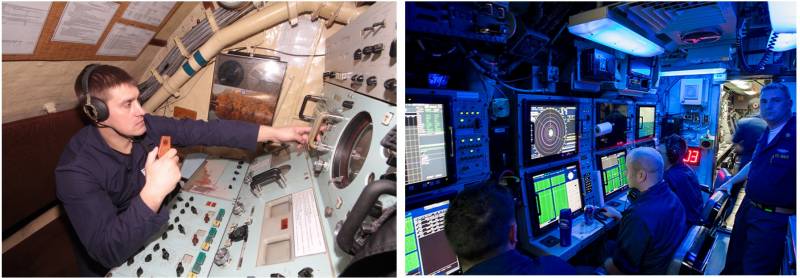
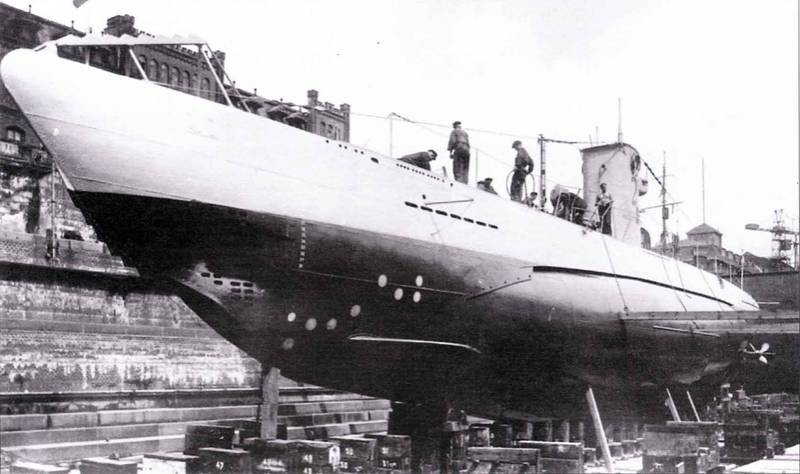
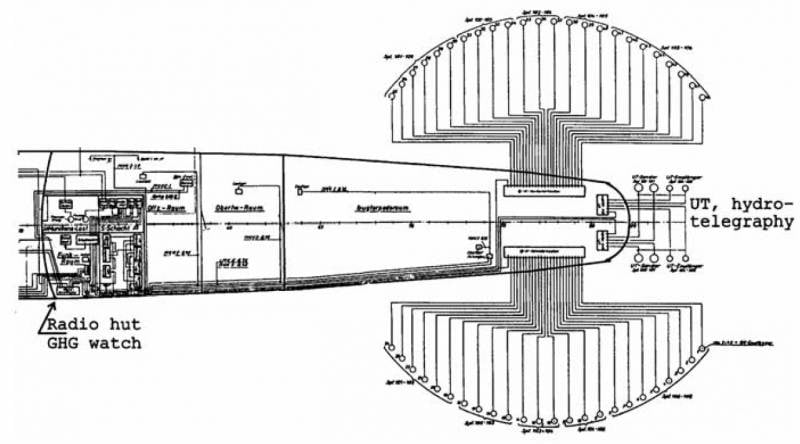
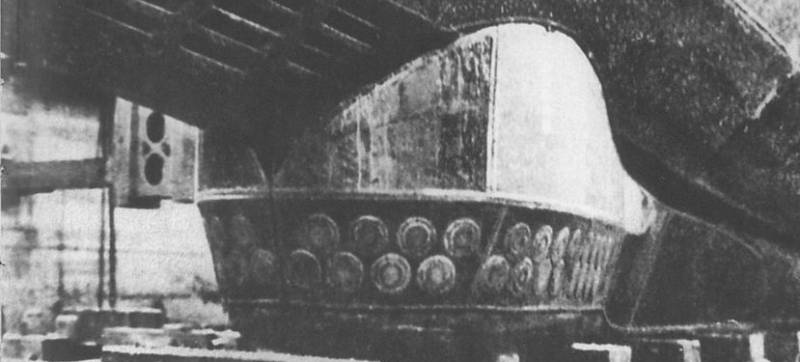
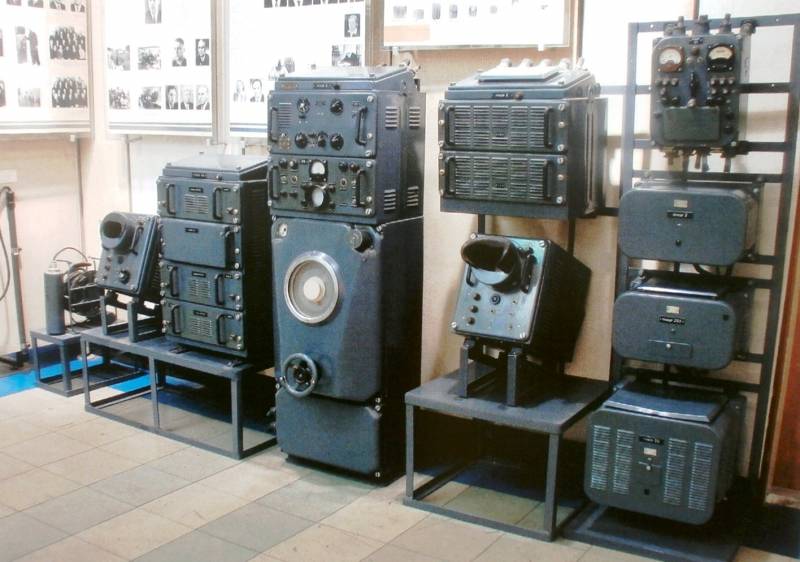
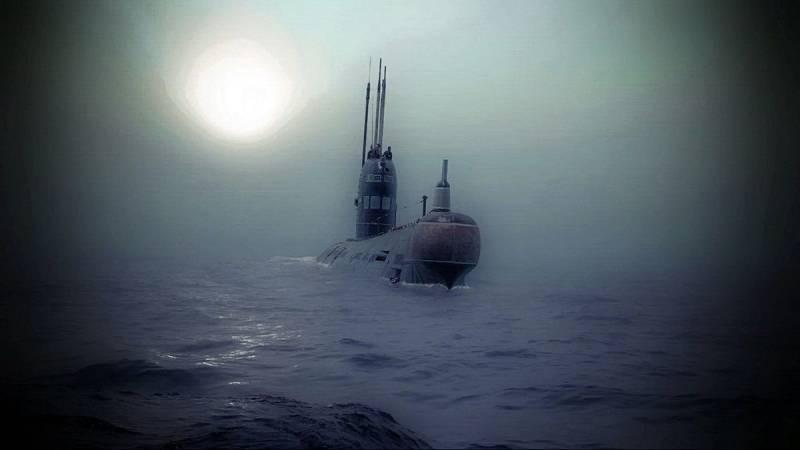
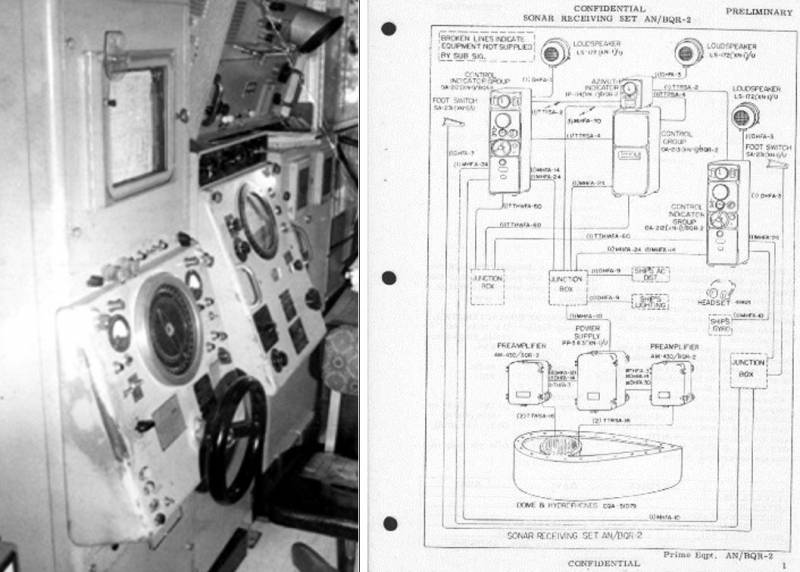

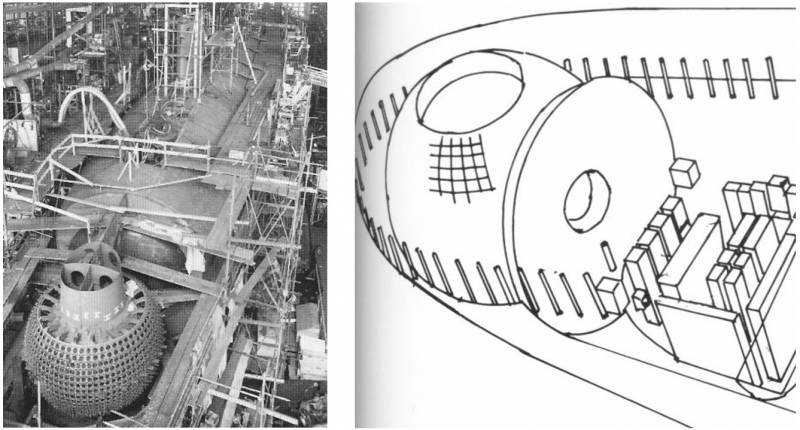
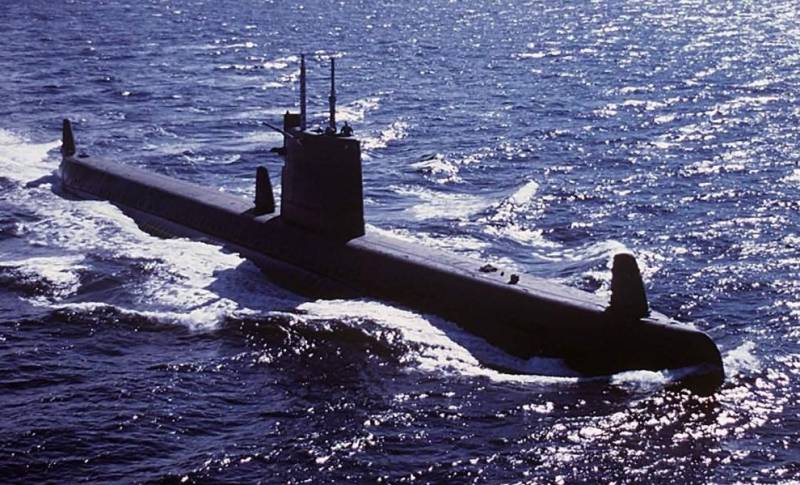

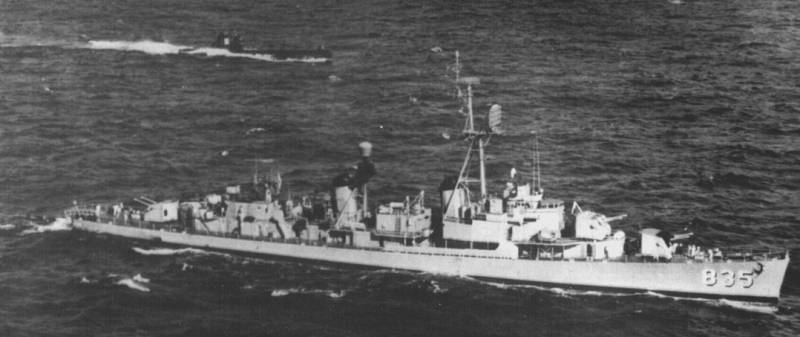
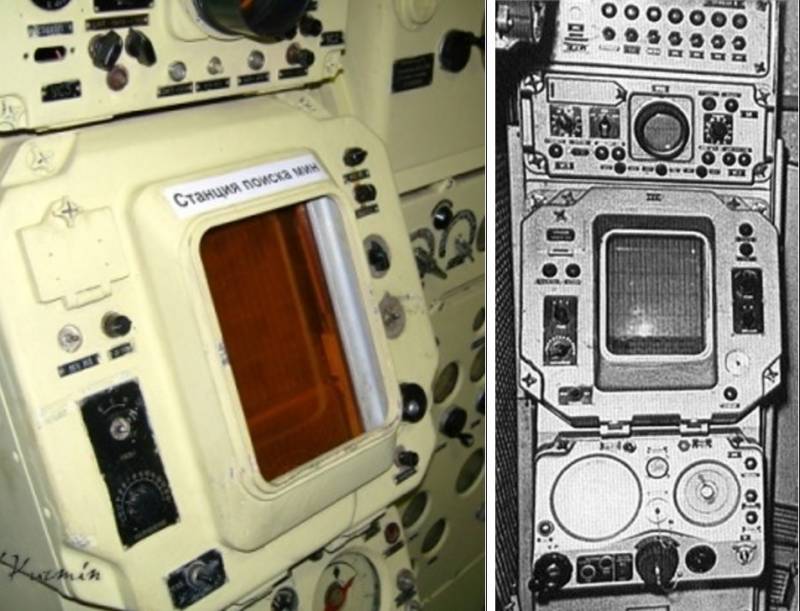
Information